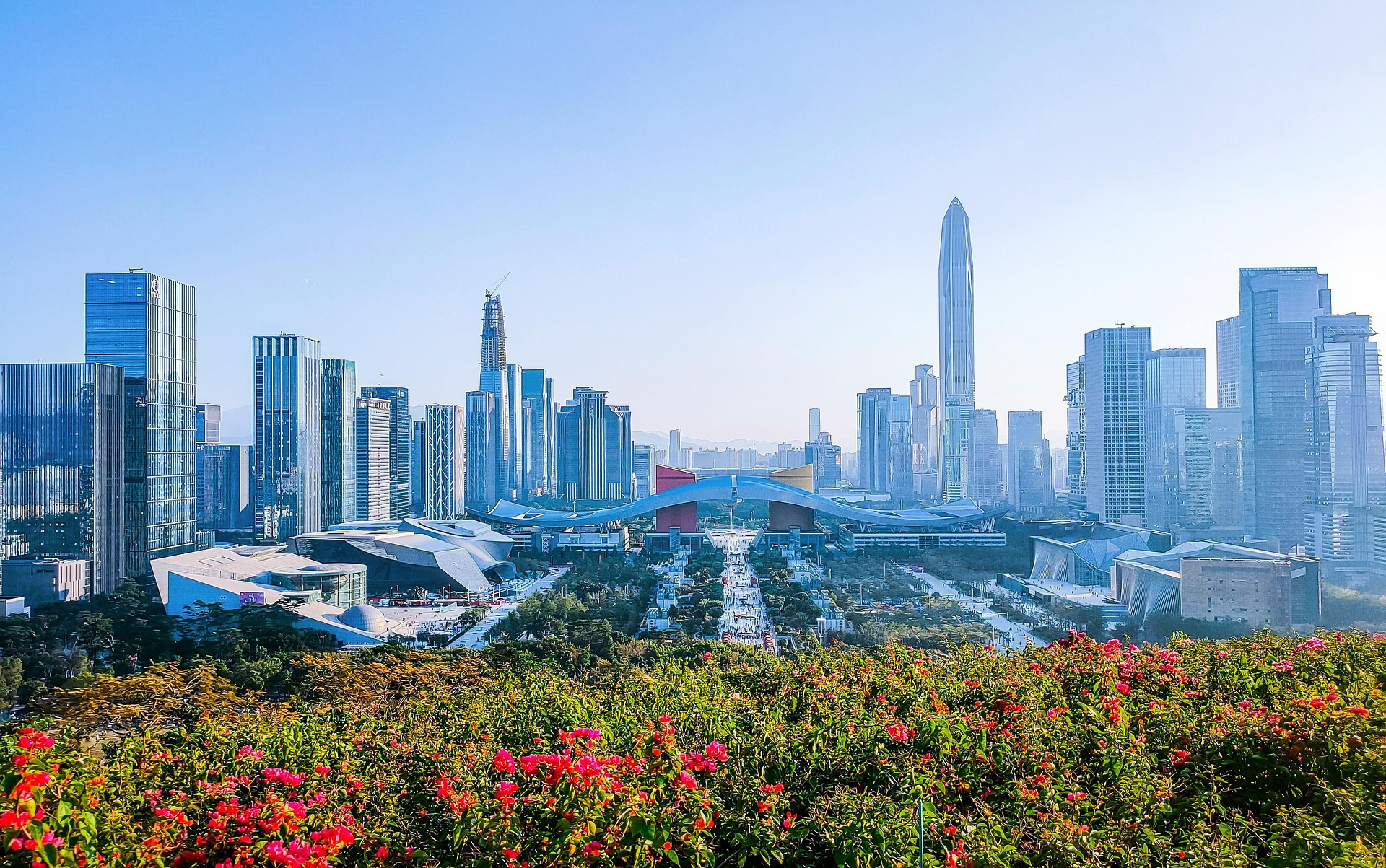Introduction
Shenzhen, a bustling metropolis in southern China, has emerged as a global leader in the adoption of electric vehicles (EVs). Known as the “Silicon Valley of Hardware,” Shenzhen is not only a hub for technology and innovation but also a pioneer in sustainable urban transportation. The city’s commitment to reducing carbon emissions and improving air quality has made it a model for other cities worldwide. This article delves into the types of electric vehicles prevalent in Shenzhen, the charging infrastructure that supports them, and the policies that have driven this transformation.
The Rise of Electric Vehicles in Shenzhen
Historical Context
Shenzhen’s journey towards electrification began in the early 2000s when the Chinese government identified electric vehicles as a strategic industry. The city, being a Special Economic Zone, was chosen as a pilot city for EV adoption. By 2011, Shenzhen had already started replacing its diesel-powered buses with electric ones, and by 2017, it became the first city in the world to have a fully electric public bus fleet.
Government Policies and Incentives
The success of EVs in Shenzhen can be attributed to a combination of stringent policies and generous incentives. The local government has implemented a range of measures to promote EV adoption, including:
- Subsidies and Tax Breaks: Shenzhen offers substantial subsidies for both EV manufacturers and consumers. These subsidies have significantly reduced the upfront cost of EVs, making them more accessible to the general public.
- License Plate Incentives: In a bid to reduce traffic congestion and pollution, Shenzhen has restricted the issuance of license plates for internal combustion engine (ICE) vehicles. EV owners, however, enjoy easier access to license plates, often through a lottery system that favors green vehicles.
- Charging Infrastructure Development: The government has invested heavily in building a robust charging infrastructure, ensuring that EV owners have convenient access to charging stations.
Environmental Impact
The shift to electric vehicles has had a profound impact on Shenzhen’s environment. The city has seen a significant reduction in air pollution levels, with PM2.5 concentrations dropping by nearly 50% since the introduction of electric buses. Additionally, the reduction in greenhouse gas emissions has contributed to China’s broader climate goals.
Types of Electric Vehicles in Shenzhen
Electric Buses
Shenzhen’s public transportation system is a shining example of successful EV integration. The city’s entire fleet of over 16,000 buses is electric, making it the first city in the world to achieve this milestone. These buses are primarily manufactured by BYD, a Chinese company that has become a global leader in electric vehicle production.
Electric Taxis
Following the success of electric buses, Shenzhen has also electrified its taxi fleet. As of 2021, over 99% of the city’s taxis are electric. The transition to electric taxis has not only reduced emissions but also lowered operating costs for drivers, as electricity is significantly cheaper than gasoline.
Electric Private Vehicles
The adoption of electric private vehicles in Shenzhen has been slower compared to public transportation, but it is steadily increasing. Popular models include the BYD Tang, NIO ES6, and Tesla Model 3. The city’s affluent population and tech-savvy residents have been early adopters of these vehicles, driven by the desire to reduce their carbon footprint and take advantage of government incentives.
Electric Two-Wheelers
Electric scooters and bicycles are also prevalent in Shenzhen, particularly among the city’s younger population. These vehicles are ideal for navigating the city’s dense urban environment and are often used for short commutes. Companies like Niu Technologies have capitalized on this trend, offering stylish and efficient electric two-wheelers.
Charging Infrastructure in Shenzhen
Public Charging Stations
Shenzhen boasts one of the most extensive public charging networks in the world. As of 2023, the city has over 80,000 public charging points, strategically located in residential areas, commercial districts, and along major highways. These charging stations are operated by a mix of state-owned enterprises and private companies, including State Grid, China Southern Power Grid, and BYD.
Fast Charging and Battery Swapping
To address the issue of long charging times, Shenzhen has invested in fast-charging technology. Many public charging stations now offer DC fast chargers, which can charge an EV to 80% capacity in just 30 minutes. Additionally, battery swapping stations have been introduced, particularly for electric taxis and buses. These stations allow drivers to swap out depleted batteries for fully charged ones in a matter of minutes, significantly reducing downtime.
Home Charging Solutions
For private EV owners, home charging is a convenient option. The city has implemented policies to encourage the installation of home charging stations, including subsidies and streamlined permitting processes. Many residential complexes in Shenzhen now offer dedicated parking spaces with charging facilities, making it easier for residents to own and operate EVs.
Smart Charging Networks
Shenzhen is also at the forefront of smart charging technology. The city’s charging network is integrated with a smart grid that optimizes charging times based on electricity demand and supply. This not only reduces the strain on the grid but also allows EV owners to take advantage of off-peak electricity rates.
Challenges and Future Prospects
Challenges
Despite its success, Shenzhen faces several challenges in maintaining its leadership in EV adoption. These include:
- Grid Capacity: The rapid increase in EV adoption has put pressure on the city’s electrical grid. Ensuring that the grid can handle the additional load is a critical concern.
- Battery Disposal: The disposal and recycling of EV batteries pose environmental challenges. Shenzhen is working on developing a sustainable battery recycling ecosystem, but this remains a work in progress.
- Consumer Awareness: While public transportation has been largely electrified, private EV adoption still lags. Increasing consumer awareness and addressing range anxiety are essential for further growth.
Future Prospects
Looking ahead, Shenzhen aims to continue its leadership in the EV space. The city plans to further expand its charging infrastructure, with a goal of reaching 100,000 public charging points by 2025. Additionally, Shenzhen is exploring the use of renewable energy sources to power its EVs, further reducing their environmental impact.
The city is also investing in autonomous driving technology, with the aim of integrating self-driving electric vehicles into its public transportation system. This could revolutionize urban mobility, making it more efficient and sustainable.
Conclusion
Shenzhen’s transformation into a global leader in electric vehicle adoption is a testament to the power of forward-thinking policies, technological innovation, and public-private collaboration. The city’s success serves as a blueprint for other urban centers looking to reduce their carbon footprint and embrace sustainable transportation. As Shenzhen continues to innovate and expand its EV ecosystem, it remains a shining example of what is possible when a city commits to a greener future.
In the coming years, as more cities around the world look to Shenzhen for inspiration, the lessons learned here will undoubtedly play a crucial role in shaping the future of urban mobility. Whether it’s through the electrification of public transportation, the development of smart charging networks, or the promotion of private EV adoption, Shenzhen has shown that a sustainable future is not only possible but already within reach.



Pingback: Electric Vehicles in Delhi: A Comprehensive Guide to Types, Charging Infrastructure, and Future Prospects - Tech Master Online